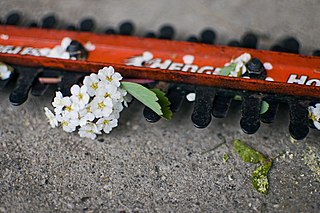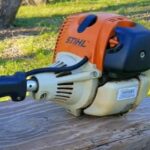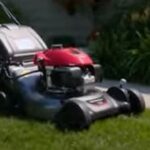As an Amazon Associate, this site earns commissions from qualifying purchases. For more information click here.
Hedge trimmers are a great help when it comes to maintaining your lawn. But just like any power tool, sometimes they simply will not start. What should you do in case that happens? That is what this article is about, to show the causes and how to fix them.
A loose wire, dead battery or overheated motor can prevent an electric hedge trimmer from starting. If it is a gas powered trimmer, there could be a problem with the fuel filter, spark plug or a clogged carburetor.
There are many reasons why a hedge trimmer may refuse to start. Usually you can trace the problem to the type of trimmer you are using. To make things easier, this troubleshooting guide is divided between gas and electric / battery trimmers.
Why Your Gas Trimmer Isn’t Working
If a gas hedge trimmer refuses to start or stalls, it is almost always due to the engine. There is a component that is clogged with dirt, worn out or damaged. Let us take a look at the most likely reasons why your gas lawn edger is not running and what you can do about it.
Clogged Fuel Filter
The fuel filter keeps dirt and other impurities from getting into the engine, so it plays an important role in keeping a hedge trimmer running smoothly.
Over time though, fuel filters get dirty. It gets worse if you never take out old fuel from the engine. When fuel is left unused in the tank, it dissipates and turns into thick sludge.
This thick fluid covers the filter and the rest if the engine, preventing the hedge trimmer from starting. The solution is to clean the fuel filter. If it is too dirty and old, replace the filter. How often to replace or clean the filter depends on how often you use the hedge trimmer.
Worn Out Spark Plug
Inspect the spark plug and look for signs of carbon on the electrode. If the electrode is burnt or there are tears on the insulator, replace the spark plug. A spark plug tester like the Ram Pro makes diagnosis easy. Run the tester as the engine cranks.
If the spark plug is working, there should be a spark on the terminals. If you do not see any spark, the spark plug is damaged and must be replaced. It is always better to replace a spark plug than try to fix it. They are widely available and easy to install. Check your owner’s manual for details on what spark plug to use.
Dirty or Damaged Carburetor
Hedge trimmer carburetors often get clogged due to unused fuel. If you stored the trimmer for months and left it with a full tank, the fuel will dissipate and leave a sticky mess behind. This thick liquid will clog the carburetor and the rest of the motor.
Clean the carburetor with a cleaning kit. Check the rest of the engine if the oil sludge has spread elsewhere. If cleaning does not work, you have to get a new carburetor.
Sometimes even if you don’t leave oil for long stretches in the trimmer, it just turns into black soot and goo. This usually occurs with old hedge trimmers or poor quality fuel. In any case the solution is to use a carburetor cleaning kit.
Clogged Spark Arrestor
As the name suggests, a spark arrestor works like a filter to arrest or stop engine sparks. Just like fuel filters, these get covered with soot and dirt over time.
If the spark arrestor is too dirty it will stop the engine from starting. Clean it and turn the hedge trimmer on. If that does not work, you have to replace the spark arrestor with a new one. In most cases, cleaning with a brush is enough to get a spark arrestor working again. Since the spark arrestor is critical to hedge trimmers, it should be one of the first things you should check.
Recoil Starter Not Working
There could also be problems with the recoil starter. It has to engage the crankshaft for the engine to start. If it does not, you have to take the recoil starter apart to find out the problem.
The most likely issue is the recoil pulley is stuck. When the starter cord is not in use, it is wound up by the recoil pulley. A broken or stuck pulley will not be able to rewind the cord and the engine will not start. The only solution is to replace the starter pulley.
Do keep in mind that sometimes it takes multiple tries to get the pulley going. This is especially true for older hedge trimmers. Before you get a replacement, try it a few times to see if you can get the motor running.

Damaged Rewind Pulley and Spring
The rewind spring recoils the cord into the pulley when you pull and release the starter cord. If the spring is worn out or broken, it will not be able to do any recoil. If this happens, the engine will not start. This can happen to the Echo 20 in. 21.2 cc and other trimmers.
To fix this, turn the hedge trimmer off and check the pulley. If it is indeed damaged, you can either replace only the broken spring or the entire recoil starter.
Replacing only the damaged spring costs less, but if another spring breaks you have to do this all over again. If your hedge trimmer is old and heavily used, it is better to get a new recoil starter kit instead.
Clogged Air Filter
Hedge trimmers need fuel and air to work. If the air filter is dirty, the engine will not receive enough air and end up with too much gas. Without the right mixture of air and gas, the engine will not start.
Fortunately it is easy to clean an air filter. Remove the dirt and you should be able to start the hedge trimmer again. Replace the air filters if you find yourself cleaning it too often. Having a few in reserve is a good idea if you use your hedge trimmer regularly.
Why an Electric Hedge Trimmer is Not Working
This troubleshooting guide covers all types of electric hedge trimmers – corded, cordless and battery powered – so you should be able to find the cause and fix here. When it comes to electric tools the problem usually stems from the wiring. With battery powered units it is often due to the battery itself.
Dead or Empty Battery
It sounds obvious, but sometimes we can forget to recharge the battery after using it. Make it a habit to recharge the battery after each use so it always has full power the next time you turn it on.
Battery powered hedge trimmers last longer than they used to, but at some point you have to recharge. When recharging, keep an eye on the indicator lights. These will tell you how much power is left and if it needs to be charged.
If the battery is full but refuses to run, check the extension cord. Is it damaged? Is it connected properly? Double check the connection to ensure that is tight and secure.
Safety Switch is On
You might be surprised at how often this can happen. In our eagerness to start, we could forget to turn off the safety switch.
The safety switch has an important function, to ensure the hedge trimmer does not accidentally turn on when you don’t want it to. However you might forget that it is there and end up thinking there is something wrong with the hedge trimmer. But with regular use of your hedge trimmer, you will get used to turning the safety switch on and off.
Loose Wiring
This is one of the most common reasons why an electric hedge trimmer will not work. The cord or extension cord is not properly connected to the trimmer, preventing power from getting through.
Even if you plug the cord into the power source, it could come off if you move too far from the outlet. If the cord gets unplugged, the hedge trimmer will lose power.
This problem is easy to fix though. First, get a longer extension cord if the one you are using feels too short. Second, secure the cord so it does not come off when you are using it.
Worn Out Motor
Motors can overheat in electric and gas hedge trimmers, and this can cause the trimmer to smoke or worst case, start a fire. The most common cause is an overworked and overheated motor.
Whether you are using an electric or gas hedge trimmer, you must never overuse it. All motors, be it on a lawn mower, hedge trimmer or vehicle, is going to overheat when used nonstop.
The solution to this is simple: give the hedge trimmer time to rest. If you notice the motor is getting too hot, turn the trimmer off and let it rest for a few minutes. When the motor has cooled down, turn it on again.
Blown Fuse or Other Electrical Problems
Sometimes the problem can be a blown fuse or short circuit. There could also be an issue with the circuit breaker or the power source itself.
Unless you are well versed in handling electrical circuits, it is better to call a licensed electrician. Before you do, check the hedge trimmer and make sure the damage is not there, but at the main electrical power.
Dirty Blades
Hedge trimmer blades get dirty with use. Sometimes debris gets stuck and prevents it from running. This can happen if your lawn has a lot of small rocks, leaves and other ground materials.
If you suspect there is dirt on the blade, turn the hedge trimmer off. Inspect the blade and if you see dirt there, use pliers, a piece of thin wood or another object to remove the dirt. Do not put your fingers between the blades.
The best way to prevent dirt from building up is to lubricate the blades. There are plenty of hedge trimmer blade lubricants available so find one that works for your hedge trimmer make and model.

I love the outdoors and all the tools for maintaining gardens, yards and lawns. The only thing I am more passionate about is sharing what I know about garden and outdoor equipment.


